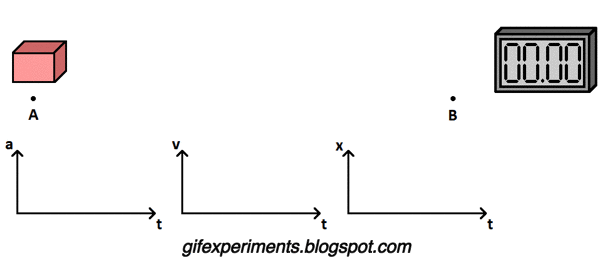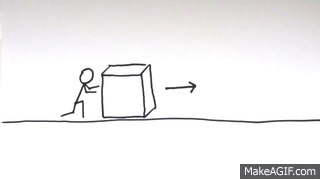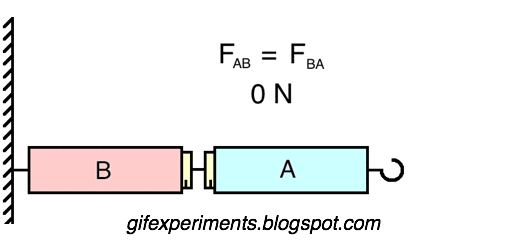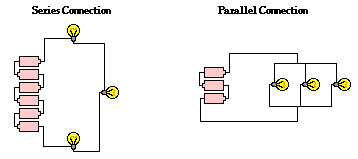Physics & Mathematics - Meadeee/GAMSAT-2021 GitHub Wiki
Physics & Mathematics
Motion and forces
Newtons law
_ First Law - an object will not change its motion unless a force acts on it. _
ΣF = m a
An object at rest remains at rest, or if in motion, remains in motion at a constant velocity unless acted on by a net external force.

- Second Law - the force on an object is equal to its mass times its acceleration.

- Third law - when two objects interact, they apply forces to each other of equal magnitude and opposite direction

- Newtons Laws
momentum
force
- A force is a push or a pull exerted on one object by another object. The units of force F are called Newtons or simply N, end text.
- An external force is a force originating from outside an object rather than a force internal to an object. For instance, the force of gravity that Earth exerts on the moon is an external force on the moon. However, the force of gravity that the inner core of the moon exerts on the outer crust of the moon is an internal force on the moon. Internal forces within an object can't cause a change in that object's overall motion.
- The net force, written as ΣF, F, on an object is the total force on an object. If many forces act on an object, then the net force is the sum of all the forces. But be careful—since force F is a vector, to find the net force ΣF Sigma, F, the forces must be added up like vectors using vector addition.
acceleration
elasticity
pressure
Conservation of Energy
power
work
Graphs
Instentanious Velocity
Waves
Progressive Waves

-
A progressive wave transfers energy without transferring material and is made up of particles of a medium (or field) oscillating e.g. water waves are made of water particles moving up and down
-
Amplitude - A wave’s maximum displacement from the equilibrium position (units are m)
-
Frequency - f The number of complete oscillations passing through a point per second, (units are Hz)
-
Wavelength - λ The length of one whole oscillation (e.g. the distance between successive peaks/troughs) (units are m)
-
Speed - c Distance travelled by the wave per unit time, (units are m/s)
-
Phase - The position of a certain point on a wave cycle, (units are radians, degrees or fractions of a cycle)
-
Phase difference - How much a particle/wave lags behind another particle/wave, (units are radians, degrees or fractions of a cycle)
-
Period - T Time taken for one full oscillation, (units are s)
-
The speed of a wave is equal to the wave’s frequency multiplied by its wavelength:
c = fλ
- The frequency of a wave is equal to 1 over its period:
f =1/T
Longitudinal waves

- Longitudinal waves - oscillation of particles is parallel to the direction of energy transfer
- These are made up of compressions and rarefactions and can’t travel in a vacuum.
- Sound is an example of a longitudinal wave, and they can be demonstrated by pushing a slinky horizontally.
Interference
Path difference is the difference in the distance travelled by two waves.
- A coherent light source has the same frequency and wavelength and a fixed phase difference.
- Lasers are an example of light which is coherent and monochromatic, meaning they emit a single (or small range of) wavelength(s) of light. Lasers are usually used as sources of light in diffraction experiments as they form clear interference patterns
- Young’s double slit experiment
Diffraction
- Diffraction is the spreading out of waves when they pass through or around a gap. The greatest diffraction occurs when the gap is the same size as the wavelength.
- When the gap is smaller than the wavelength most waves are reflected, whereas when it is larger there is less noticeable diffraction
- When a wave meets an obstacle you get diffraction round the edges, the wider the obstacle compared to the wavelength, the less diffraction.
refraction
-
A refractive index (n) is a property of a material which measures how much it slows down light
-
passing through it.
-
This is calculated by dividing the speed of light in a vacuum (c) by the speed of
-
light in that substance n =c/cs
-
A material with a higher refractive index can also be known as being more optically dense.
-
As light doesn’t slow down significantly when travelling through air (in comparison to travelling
-
through a vacuum), the refractive index of air is approximately 1.

reflection
Refraction occurs when a wave enters a different medium, causing it to change direction, either towards or away from the normal depending on the material’s refractive index. Snell’s law is used for calculations involving the refraction of light:
n1 sinθ1 = n2 sinθ2
-
- ➔
n1is the refractive index of material 1,
- ➔
-
- ➔
n2is the refractive index of material 2,
- ➔
-
- ➔
θ1is the angle of incidence of the ray in material 1
- ➔
-
- ➔
θ2is the angle of refraction of the ray in material 2
- ➔
sound
ultrasound
conduction
convection
radiation
Electricity and their circuits
voltage current
series and parallel circuits
